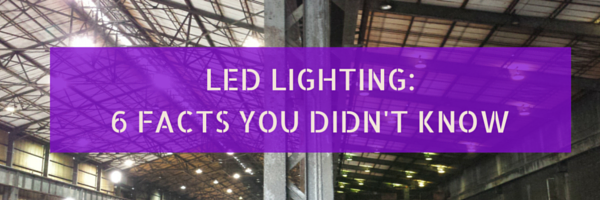
Most people know that LED lightbulbs are good for environmental sustainability and durability. But did you know that there are other differences that set LED lighting apart from incandescent and fluorescent lighting?
- LEDs Light Up Instantly
Compact Fluorescent Light (CFL) bulbs are a common alternative to LED, but flip the switch and CFL lighting looks a little dim. Unlike LED lights, CFLs are hyper-sensitive to climate and take a long time to reach full brightness in cold weather or a cold room. LED bulbs hit maximum brilliance the moment you turn on the light.
- LED Light Comes in More Colors than Bluish White
Bright white lighting with blue undertones is often associated with LED lighting. LED lights certainly do come in bluish-white mimicking the light spectrum of natural sunshine. While the blue-toned option actually boosts productivity, LED lighting has come a long way from one color option. Most LED bulbs now sold as alternatives to CFLs have a color temperature of 2700K, known in light bulb slang as “Warm White.” LED bulbs in Warm White are a dupe for the typical cast of a CFL bulb, but LEDs can come in almost any color.
Color temperature also plays a role in attracting bugs at night. If your porch light serves more as a bug graveyard than as a beacon for human beings, try switching it out for a Warm White LED bulb or an LED bulb specifically calibrated to a place on the color spectrum that disinterests insects. Typically, bugs are drawn to blue-toned and UV light. LEDs produce minimal UV light compared to traditional lighting, so choose the right tone for your outdoor bulb to skip the bug zapper.
- Take Aim: LED Lighting Has Direction
You put a lightbulb in a lamp and it throws light, right? That’s true, but some bulbs are omnidirectional, while others can be focused in one direction. Unlike traditional lights, LED lighting can be focused or omnidirectional depending on the LED bulb and your application. Car manufacturers use LED lighting for strong tail and headlights, while LEDs made for the home are designed to be omnidirectional.
- LEDs Won’t Drive You Crazy
Traditional lighting contains trace amounts of mercury, a highly toxic gas that can cause the infamous mad hatter disease. Sound crazy? Symptoms of exposure to mercury gas earned their name from hatmaking methods starting in the 17th century. Hatmakers who used mercury vapor in their craft would develop mercury poisoning, which causes chest pains, tremors, and even dementia.
While you’re unlikely to become the Mad Hatter from using traditional light bulbs, most people throw broken light bulbs out rather than recycling, leading to toxic mercury build-up in groundwater. LED lighting uses no mercury at all, making it safe and sane for both you and the environment.
- Stay Cool with LEDs
Have you ever reached your hand under a lampshade to turn off the light and skimmed the hot bulb on accident? Ouch. Unlike fluorescent and incandescent bulbs, LED lighting doesn’t heat up to the touch. Flammable material and our fingertips can safely touch the surface of an LED bulb without risking a burn, making LED lighting very popular in holiday string lights. LED lights still emit heat, but that heat doesn’t travel with the light itself. Instead, LED bulbs are designed to sink heat into the back end of the bulb, avoiding the parallel of traditional light bulbs and medieval torches.
- Run Your Own Light Show: Smart LED Technology
Are you still fumbling with old-fashioned switches when you need a light? LEDs lend themselves to unprecedented smart programming built right into the bulb. Now you can control smart-enabled LED bulbs from your smartphone or computer, and even schedule your lights to turn on and off, dim, or change color. Using a smartphone app, you can sync your bedroom lights to your natural circadian rhythm, remotely activate porch lights while you’re away on vacation, or set the mood for the weekend with lights that cycle from white through a rainbow of colors. That’s smart lighting for this millennium.
If you're interested in seeing how the advantages of LED lighting can benefit your business, talk to one of our experts. Get a free LED Lighting consultation!

